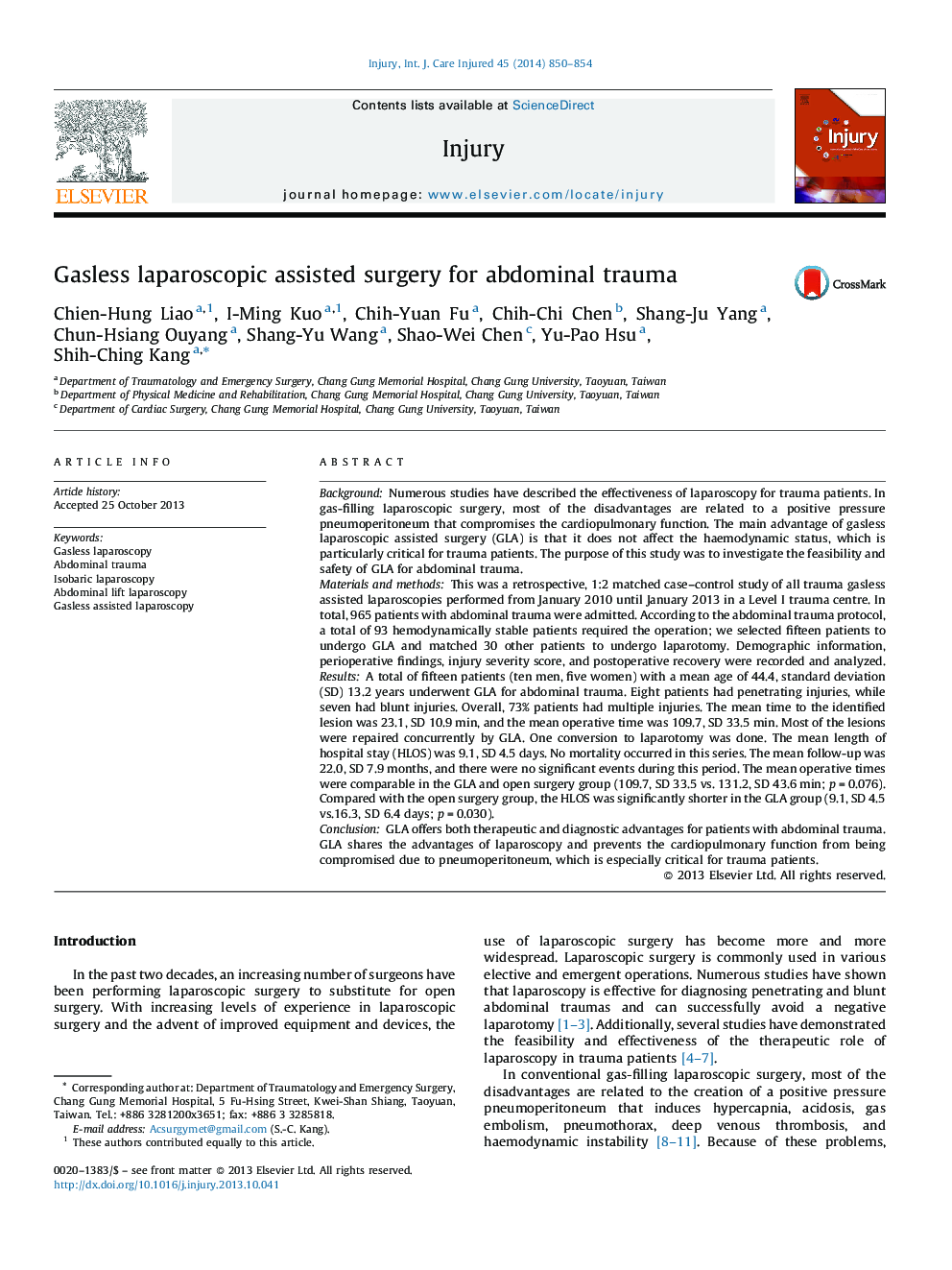| Article ID | Journal | Published Year | Pages | File Type |
|---|---|---|---|---|
| 3239617 | Injury | 2014 | 5 Pages |
BackgroundNumerous studies have described the effectiveness of laparoscopy for trauma patients. In gas-filling laparoscopic surgery, most of the disadvantages are related to a positive pressure pneumoperitoneum that compromises the cardiopulmonary function. The main advantage of gasless laparoscopic assisted surgery (GLA) is that it does not affect the haemodynamic status, which is particularly critical for trauma patients. The purpose of this study was to investigate the feasibility and safety of GLA for abdominal trauma.Materials and methodsThis was a retrospective, 1:2 matched case–control study of all trauma gasless assisted laparoscopies performed from January 2010 until January 2013 in a Level I trauma centre. In total, 965 patients with abdominal trauma were admitted. According to the abdominal trauma protocol, a total of 93 hemodynamically stable patients required the operation; we selected fifteen patients to undergo GLA and matched 30 other patients to undergo laparotomy. Demographic information, perioperative findings, injury severity score, and postoperative recovery were recorded and analyzed.ResultsA total of fifteen patients (ten men, five women) with a mean age of 44.4, standard deviation (SD) 13.2 years underwent GLA for abdominal trauma. Eight patients had penetrating injuries, while seven had blunt injuries. Overall, 73% patients had multiple injuries. The mean time to the identified lesion was 23.1, SD 10.9 min, and the mean operative time was 109.7, SD 33.5 min. Most of the lesions were repaired concurrently by GLA. One conversion to laparotomy was done. The mean length of hospital stay (HLOS) was 9.1, SD 4.5 days. No mortality occurred in this series. The mean follow-up was 22.0, SD 7.9 months, and there were no significant events during this period. The mean operative times were comparable in the GLA and open surgery group (109.7, SD 33.5 vs. 131.2, SD 43.6 min; p = 0.076). Compared with the open surgery group, the HLOS was significantly shorter in the GLA group (9.1, SD 4.5 vs.16.3, SD 6.4 days; p = 0.030).ConclusionGLA offers both therapeutic and diagnostic advantages for patients with abdominal trauma. GLA shares the advantages of laparoscopy and prevents the cardiopulmonary function from being compromised due to pneumoperitoneum, which is especially critical for trauma patients.
